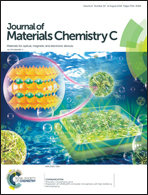Photoluminescence tuning in carbon dots: surface passivation or/and functionalization, heteroatom doping
Abstract
Carbon dots (CDs) are an emerging fluorescent subclass of the carbon nanomaterial family that have been perceived as a versatile new platform in an extensive range of applications. Among this state-of-the-art work, photoluminescence (PL) correlative applications play a leading role by virtue of the benign biocompatibility, low cost and high chemical scalability of CDs. In this review article we first emphasize the functions of the surface passivation and/or functionalization process during synthesis, which is one of the fundamental methods used to control the fluorescent properties during the early stages of the synthesis of CDs by changing the surface emissive sites (surface states), especially in some inert raw CDs. More importantly, the doping approach is another critical factor that paves an avenue to efficiently tune the intrinsic PL properties of CDs. Second, we highlight a series of the latest relative PL tuning mechanisms that provide new insight in this review into modified synthesis strategies for CDs that focus on the essential factors (i.e., physical, chemical and electronic structures) needed to enhance the PL properties of CDs. This review and further research is expected to facilitate understanding of the relationship between synthetic methods and PL tuning.

- This article is part of the themed collection: Recent Review Articles


 Please wait while we load your content...
Please wait while we load your content...